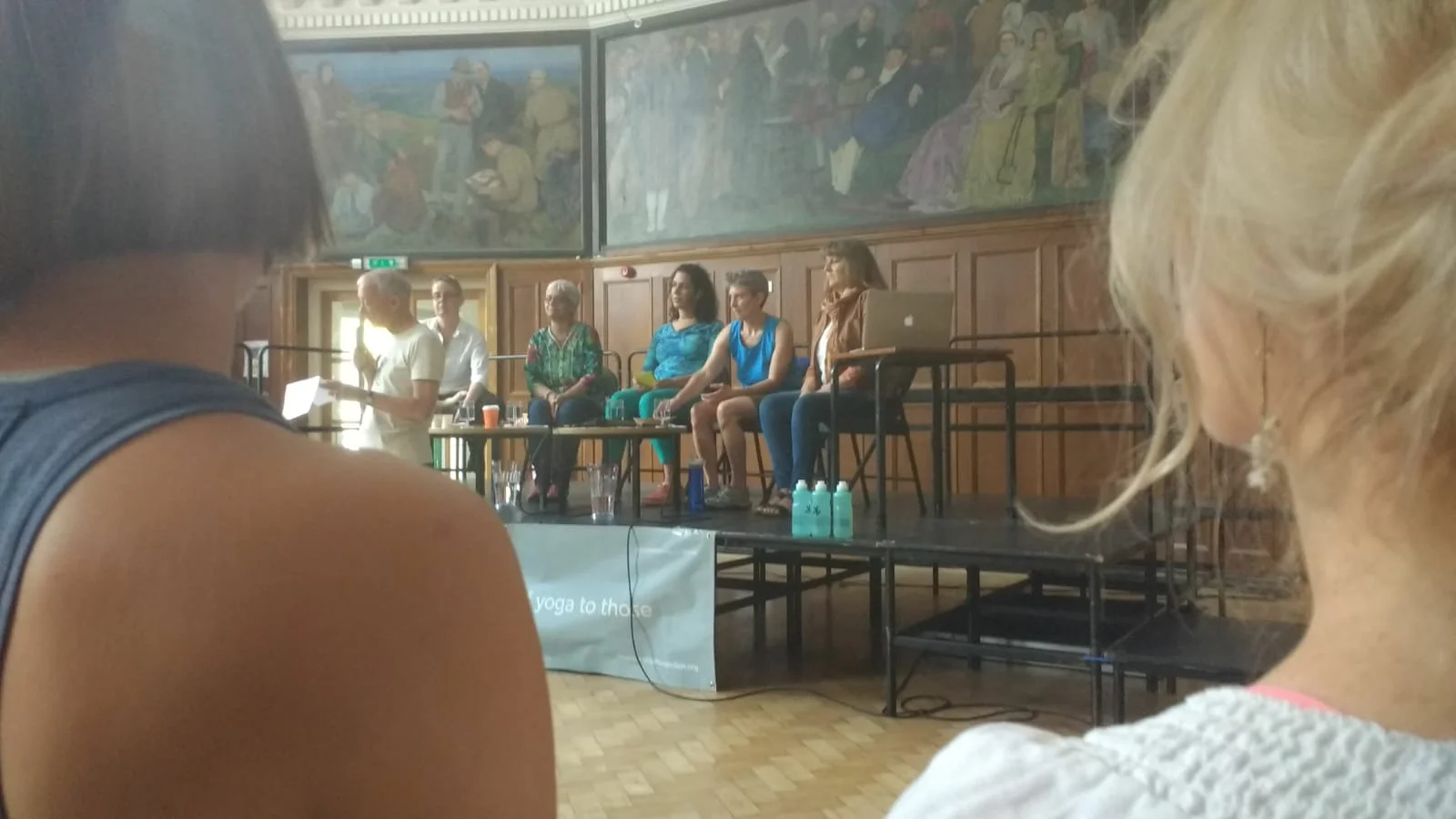Last week I was privileged enough to spend some time at the Brighton Yoga Festival, organised by the Brighton Yoga Foundation. A particular reason for traipsing down from London was to attend a very special panel on sexual violence and accountability in yoga, put together by organiser Davy Jones. Chaired by Theo Wildcroft and Jacqueline Hargreaves, the panel hosted Jubilee Cooke and Karen Rain, who had both flown over from the States specially, and Josna Pankhania, who had flown over from Australia.
Jubilee and Karen are activists and former Ashtangis, who speak to the wider yoga community about the abuses enacted by Pattabhi Jois, the founder of the Ashtanga Yoga method. They also speak about what continues today, and about lack of accountability by those who were there and turned a blind eye. Also, then, to those learning to teach today, inside a practice that is more hands-on than any other; how does this work?
Counsellor and psychotherapist Josna is also an activist and social justice advocate who continues to work for healing, justice and truth in the Satyananda community, after the Australia Royal Commission into Institutional Responses to Child Sexual Abuse exposed numerous abuses. She says she is an activist because she’s a feminist, and one who doesn’t worship a man with clay feet! Excellent words we can all support and live by. She expressed: “Survivors have taught us not to live a compromised life that denies our integrity as human beings.”
It was the first time that all of these women had been in the same room, so despite having what I thought was a summer cold (it turned out to be flu), I made my way down to the festival to see them and hopefully meet them in person. Having attended the panel, I wanted to document what went on - it was being filmed, but with no guarantee of its release in any particular timeframe.
There weren’t anywhere near as many people as I’d hoped would be at the panel (perhaps because it was in Brighton, perhaps the advertising, perhaps the topic still puts off the very people who it’s aimed at), but the main positive I took away was that the people who were there were vocal, good people who would take the messages out into their communities, such as Amelia Wood, Harriet McAtee and Bryony Hamerton. Change can be like a hose drizzling water into the soil - the flow isn’t fast but it gets there and does the job in the end.
One of the things I thought was most interesting was that Karen told us she hadn’t spoken up as part of anything to do with yoga, purely because of the MeToo movement. Karen had no idea about what would come from her statement. Indeed, from my research about Karen, I knew that she had left the yoga world a long time ago, and was working in other fields.
Karen said she hadn’t spoken up before because “I knew no one would listen”, but in 2017, at the height of the MeToo movement, she felt she had to. “Someone very famous had assaulted me,” she explained. “It seemed like a moral imperative.”
During the course of the panel, both Karen and Jubilee how Pattabhi Jois sexually assaulted them repeatedly. While this is graphic content, I feel it’s important to put here, because it is their experience, and those of us who attended the panel wanted to be clear that we were there to hear their voices, their stories, and not to sanitise it in any way. It’s easy to do so, particularly as an ashtangi, to brush it aside. But anyone who sat in that room last weekend would not have been able to do so, not any longer. We must be there to witness their words and share the truth throughout the wider community.
Karen says: “The most regular assault he did to me was dry-humping me in supine postures. It got worse over time. He was seeing what he could get away with. Backbending, standing poses from behind. I saw him do all the things to other students. He groped one of my breasts once... it seemed totally random, he groped my genitals, and groped my and many other women’s buttocks. He used to do that when we said goodbye, and kissed many of us on the mouth I've heard stories of him digitally raping – in prasarita padottanasana he came from behind and jams his fingers into women's vaginas. Practitioners wrote it off as a mulabandha assist.”
Power dynamics are an absolute bugger, present in almost every situation, requiring the most insane amount of bravery to battle, or a really good person in the powerful end to prevent them from becoming problematic. I wrote about them at length in my YTT essay, which I will share a tweaked version of soon. For myself, I am perfectly capable of telling other people what to do or stepping into situations, but when I experienced sexual assault, I was never able to respond in any strong way in the moment; the first and last times I remember feeling like a rabbit in headlights, terrified and unable to process the situation straight away.
Karen also spoke about Jois’ wife, pointing out that despite hiding in plain sight, which practitioners used as a rationalisation to forgive the abuse, he was careful not to touch students in front of his wife, who was alive for a good period of time while all of this was going on. Karen attributes this to rape culture, and calls it incredibly cruel. It’s just one more layer on top of the nastiness that was clearly going in Mysore and during world tours.
Jubilee says of her experience: “It was very intentional and deliberate. He would repeat it every day.”
Some of her recollections:
“In supta padangusthasana, him looking back and forth to check that his genitals were aligned with mine” (he would then lie on Jubilee as she lay with one leg in the air, the other straight)
In downward facing dog: “Without physically touching me, he would thrust his hips, back and forth, like air-humping. I would look back between my legs and think 'what is he doing'?”
Jubilee is clear that it’s not just now she’s brought this up. She says she spoke to Ashtanga teachers local to her and to others about what had happened to her during her time in India for 22 years, but says “there were foggy looks on their faces, there was joking and dismissiveness. They didn’t care.”
Remembering the words of a local Indian woman she told at the time helped Jubilee to come forward in the end: “She told me, ‘you tell him, don't touch my body’.” Knowing that someone else, especially an Indian woman from that culture, had heard and believed her and said it wasn’t okay was one of the things that helped Jubilee start to heal from this experience.
Even today, only a handful of Ashtanga teachers have signed Karen’s petition concerning reparations for what happened. Many seem to want to bury their heads in the sand rather than speak out and, perhaps, risk losing a hard-won community. But, as Karen says, there is a moral imperative here. Good humans do the right thing eventually, even if it’s scary.
Jubilee herself experienced, while not sexual, hands-on adjustments that echo how physical Jois was and how he trained his students. I cannot imagine being in a modern class where this behaviour would be appropriate. She says: “My teacher would adjust me a lot. In janu sirsasana C the teacher would lie on top of me and say 'does it hurt'?... In kapotasana, my teachers would crank me to grab my heels. I would have a muscle spasm in my belly, and the teacher would say it was 'deep bottled emotional blockages’.”
Independent researcher Jacqueline Hargreaves, who co-moderated the panel, has been looking into the history of yoga and asana practice. What she has found should raise some key considerations not just for Ashtanga teachers but across the teacher-student spectrum.
Using premodern textual research from the Hatha Yoga Project, she notes: “Nowhere do we find evidence to support bodily intervention by gurus. And nowhere do we find a strict adherence to a rigid order of asana in a ‘one type fits all’ framework for practicing physical postures.”
While no one is saying that touch itself is inherently bad, or that everyone who chooses to use touch in class (myself included) is an abuser, the use of it clearly has no historical precedent in asana teaching and cannot therefore be excused by teachers (such as Jois) who claim that this is always how things were.
Jacqueline hammers home the point: “What many Ashtanga teachers and practitioners miss when confronted by the abuses of their guru Jois is that adjustments are not inherent to the practice of yoga. When scrutinised through the lens of Jois’ abuse, they must be seen as a way in which abuse was disguised and enabled.”
She posits the thought-provoking point: “What if the whole idea of physical adjustments is a disguise for abuse? [...] Jois’ very successful system of yoga has influenced millions of teachers around the world to facilitate strong physical adjustments, body-on-body. However, as we have heard here today, these were a way for him to take advantage of women. Can you contemplate the idea that we have been groomed into complacency when accepting physical adjustments as an inherent component of teaching yoga?”
Isn’t it time we stepped up and said this out loud?
Like Karen, Jacqui speaks of the nature of social coercion in disempowering survivors. She empathised with Karen and Jubilee, pointing out how hard it is for an individual to speak freely about something that has had such a huge impact on their lives.
Moderator Theo points out that predators hide in plain sight: “Predators aren't predators with everyone. Predators will seek out environments that are vulnerable. Precisely in spaces where you say 'it could not happen here'.”
This is my own experience. The times I’ve been sexually assaulted range from: me as an 18-year-old being taken advantage of by a 31-year-old who pretended he was a friend of someone I trusted. Me leaving a date with the individual, having refused to go back to his flat. Me at a friend’s birthday event, trapped in a row I couldn’t get out of, next to the person who assaulted me, a friend of my flatmate.
Theo concludes with a nod to the future: “Our healing, trauma and practices are hard-won. We figure them out between ourselves. We don't need to systemise them and have them sold back to us by the very people who enabled them.”
About me: I’m an almost-qualified yoga teacher (bring on September) whose personal practice veers between embodied somatic movement and Ashtanga. As an Ashtangi, I’ve had to come to terms with a lot of the history of the practice, and understand my own reactions to this, and as someone who’s survived a number of sexual assaults, I feel a strong sense of responsibility to ensure that my students and colleagues have good bodily autonomy and understand the power differential between teacher and student.

